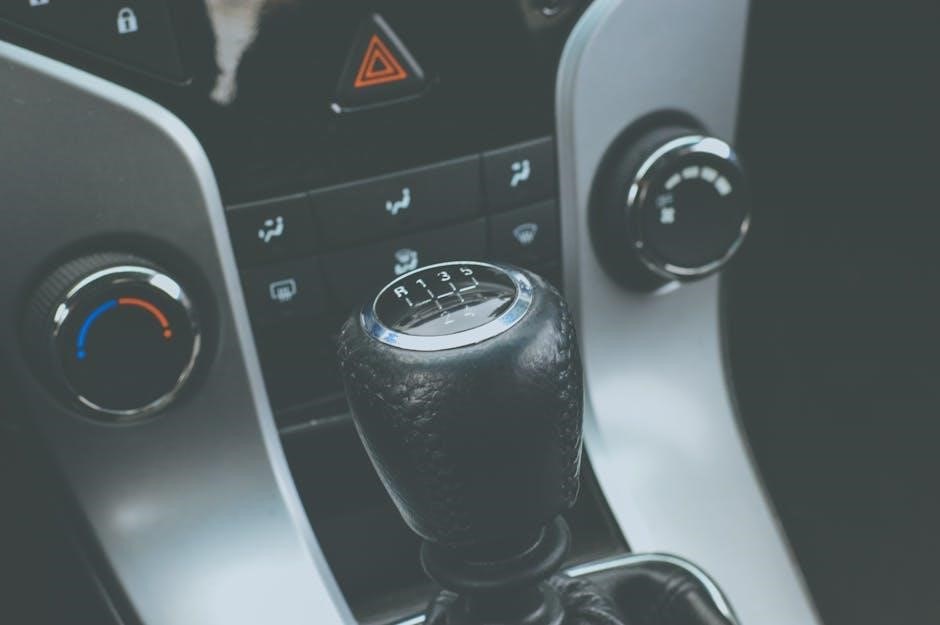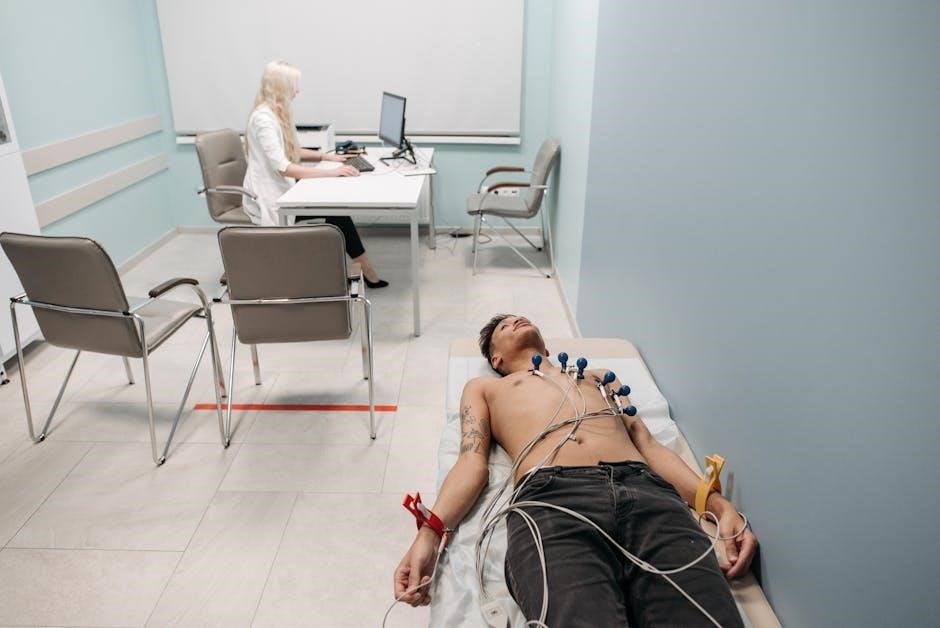
Drive hospital bed manuals are essential guides for users, caregivers, and technicians. They provide detailed instructions on safe operation, assembly, and maintenance, ensuring optimal functionality and patient safety. These manuals often accompany the beds.

Understanding Drive Hospital Bed Models
Drive Medical offers manual, semi-electric, and full-electric hospital beds. Each model caters to different needs, with varying levels of adjustability. The manuals provide specific instructions for each bed type, including part identification and operational procedures.
Manual Beds
Drive manual hospital beds offer a cost-effective solution for homecare. These beds feature manual adjustments for head and foot sections via hand cranks, typically located at the foot end of the bed. These cranks offer Foot, Head and overall bed height adjustment. The Drive Medical 15003P model is known for its user-friendly design, easy assembly, and robust construction. They often come with a limited lifetime warranty on welds and several years on the frame. Manuals provide detailed instructions for crank operation, ensuring proper and safe adjustments for patient comfort.
Semi-Electric Beds
Drive semi-electric hospital beds combine manual and electric functions. The head and foot raises and lowers are powered, while the bed height is adjusted manually with a crank. Models like the Drive 15030BV offer convenient electric controls for patient positioning, enhancing comfort and caregiver ease. These beds are often lightweight and easily assembled, featuring interchangeable head and foot boards. The manuals include instructions for both electric and manual operations, ensuring safe and effective use of all features. The motor assembly can be installed and removed with patient in bed.
Full Electric Beds
Drive full electric hospital beds offer complete motorized control for maximum convenience and adjustability. The head, foot, and bed height can all be adjusted electronically with the touch of a button. Manuals for models like the Drive 15235BV provide comprehensive guidance on using these electric controls. These beds often prioritize user-friendliness and ease of setup. The manuals also detail safety precautions, including weight limits and side rail usage. Full electric beds enhance patient comfort and reduce strain on caregivers by automating all adjustment functions, making them a popular choice in homecare settings and hospitals.
Key Features and Specifications
Drive hospital bed manuals detail crucial features and specifications; This includes weight capacity, dimensions, construction materials, and special functionalities. Understanding these aspects ensures appropriate bed selection and safe usage.
Weight Capacity
Drive hospital bed manuals prominently display the weight capacity, a critical safety specification. The total weight limit for Drive Medical’s 36-inch wide Manual/Semi-Electric/Full Electric beds is typically 450 pounds (204 kg). This limit encompasses the occupant, mattress, accessories, and any other objects on the bed. Exceeding this weight can compromise the bed’s structural integrity and pose significant safety risks to the patient. Always adhere to the specified weight restrictions to prevent accidents and ensure proper bed function, as mentioned in the Drive Medical manuals and related safety guidelines. Never permit more than one person on the bed.
Dimensions
Drive hospital bed manuals include detailed dimensional specifications crucial for proper placement and compatibility. While specific dimensions vary depending on the model, the Drive Medical beds typically come in a 36-inch width. The manuals provide measurements for length, height, and overall footprint, aiding in space planning within a healthcare facility or home. These dimensions are essential when selecting mattresses and side rails to ensure a correct and safe fit. Accurate dimensions also facilitate transportation and assembly, allowing caregivers to maneuver the bed effectively. Refer to the manual for the precise measurements relevant to your specific Drive hospital bed model.
Material and Construction
Drive hospital bed manuals offer insight into the materials used and the construction methods employed in manufacturing the beds. Typically, Drive Medical beds feature a robust steel frame known for its durability and weight-bearing capacity. The manuals detail information about the finishing, such as powder coating, which protects against corrosion and wear. Composite end panels are commonly used for headboards and footboards. The manuals provide specifics on the type of composites used, detailing their impact resistance and ease of cleaning. Understanding the material and construction helps users assess the bed’s longevity and maintain its condition effectively, ensuring patient safety and optimal performance.

Assembly and Setup
Drive hospital bed manuals include detailed instructions for assembly and setup, ensuring a safe and functional product. The manuals often emphasize user-friendly assembly with minimal tools required. They guide users through connecting the drive shaft to the bed end gearboxes, ensuring proper alignment. The manuals clarify that bed ends must be installed as a set; Diagrams and step-by-step instructions are included, simplifying the process. These manuals provide guidance on installing side rails and making sure that the mattress is the correct size. Proper assembly and setup are crucial for the bed’s stability and performance, guaranteeing patient safety and comfort during use.
Operating Instructions
Drive hospital bed manuals offer clear operating instructions, detailing both manual and electric adjustments. These instructions cover raising and lowering the head and foot sections, ensuring proper bed functionality and patient comfort.
Manual Adjustments
Manual adjustments on Drive hospital beds typically involve using hand cranks located at the foot end of the bed. These cranks allow for adjusting the height of the head and foot sections independently. To operate, fold down the desired crank and rotate it to raise or lower the corresponding section.
Ensure the crank is securely in place during adjustments. Some models might also include a crank for overall bed height adjustment. Always refer to the specific manual for your Drive bed model to understand the exact location and operation of the manual cranks.
Electric Controls
Drive semi-electric and full-electric hospital beds utilize electric controls for adjusting bed positions. These controls are usually located on a hand pendant, which is connected to the bed frame. The pendant features buttons or switches to control the head and foot sections, raising or lowering them to the desired position.
Full-electric beds may also include a button for adjusting the overall bed height. Ensure the control pendant is easily accessible to the patient. Some models have a lock-out feature to prevent unintended adjustments. Refer to the user manual for specific control functions.

Safety Guidelines
Adhering to safety guidelines is crucial when operating Drive hospital beds. These guidelines minimize the risk of injury to the patient, caregiver, and equipment. Regular review of these guidelines is highly recommended.
Weight Limits
Understanding and adhering to the weight limits of your Drive hospital bed is paramount for patient safety and the longevity of the bed itself. Exceeding the specified weight capacity, which often includes the occupant, mattress, and any accessories, can compromise the bed’s structural integrity. This could lead to potential malfunctions or even collapse, posing a significant risk of injury to the patient. Always consult the user manual to determine the exact weight limit for your specific Drive hospital bed model. Regularly check the bed for any signs of stress or damage, particularly if the bed is frequently used near its maximum weight capacity. Remember, the stated weight limit is a maximum, not a suggestion.
Side Rail Usage
Drive hospital bed side rails are designed to enhance patient safety and prevent falls. Correct side rail usage, as detailed in the user manual, is crucial. Ensure that only compatible Drive DeVilbiss Healthcare side rails are used with the bed. Always verify that the side rails are securely locked in place before leaving the patient unattended. Regularly inspect the side rails for any signs of damage or malfunction. When adjusting the bed’s position, be mindful of the side rails to avoid accidental entrapment. If using half rails, consider the patient’s mobility and cognitive abilities to determine if they are appropriate. Never use side rails as a substitute for proper supervision. Different models have different rail mechanisms, so familiarize yourself with your bed’s specific instructions.
General Precautions
Adhering to general precautions outlined in the Drive hospital bed manual is vital for safe operation. Never permit more than one person on the bed at a time. Ensure the mattress is the correct size for the bed frame to prevent gaps and potential entrapment. Regularly inspect the bed for loose parts or damage. When using electric beds, avoid overloading electrical circuits. Keep the power cord away from potential hazards. Always disconnect the bed from the power source before cleaning or performing maintenance. Do not use the bed in wet or damp environments. Ensure adequate lighting is available around the bed to prevent accidents. Familiarize yourself with the bed’s emergency procedures. If any unusual noises or malfunctions occur, discontinue use and consult a qualified technician. The FDA’s guide to bed safety is also a helpful resource.

Maintenance and Troubleshooting
Regular maintenance of your Drive hospital bed is crucial for its longevity and optimal performance. Consult the Drive hospital bed manual for specific maintenance schedules. Regularly clean the bed frame and mattress with a mild disinfectant solution. Inspect all moving parts for wear and tear, lubricating as needed. Check electrical cords and connections for damage. If the bed is not functioning correctly, refer to the troubleshooting section of the manual; Common issues include motor malfunction, control panel errors, and difficulty adjusting the bed. Before attempting any repairs, disconnect the bed from the power source. If you cannot resolve the issue, contact a qualified technician or Drive Medical’s customer support for assistance. Always use genuine Drive Medical replacement parts to ensure compatibility and safety.
Warranty Information
Drive Medical provides warranties on its hospital beds, covering defects in materials and workmanship. The specific warranty terms vary depending on the model and components. Typically, welds have a limited lifetime warranty, while the frame may have a five-year warranty. Other parts and components usually have a one-year warranty. The warranty is valid for the original purchaser and requires proof of purchase. The warranty does not cover damage caused by misuse, neglect, or unauthorized repairs. To make a warranty claim, contact Drive Medical’s customer service or an authorized dealer. They will guide you through the process and may require you to return the defective part for inspection. Ensure proper documentation and adherence to the warranty terms to ensure a smooth claim process. Consult your Drive hospital bed manual for detailed warranty specifics.